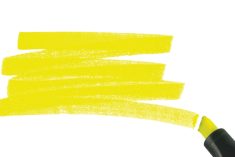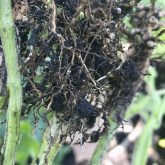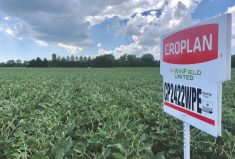Even the most consistent soil-applied herbicide programs in IP soybeans fail to provide season-long control. Weed escapes or second flushes are inevitable. Proper timing is the key to effective control.
When I started with OMAFRA in 2002, the University of Guelph had done a series of trials with a post-emergent herbicide called “Cleansweep.” At the time, it was the predominant product in the marketplace, but application timing was critical. Applied too early and you often had escapes of certain weeds that had to be emerged for control. Applied too late and the weeds were too large, control was poor.
All this is to say that over the course of several years, the optimum post-emergent application timing was 21 days after planting. Weeds were often in the ideal two- to six-leaf stage at 21 days after planting. To this day, this benchmark is often a good guideline. So if you have a soil-applied herbicide down, it is best to start scouting for weed escapes at 14 days after application. Continue to scout every two to three days until the end of the critical weed-free period (third trifoliate stage.)

If you start catching new weeds emerging, you have about a week to get your post-emergent herbicide applied before they are beyond their most susceptible growth stage. For example, this past season, at 14 days after planting, I could find common ragweed, lamb’s quarters and velvetleaf recently emerged and at the cotyledon to two-leaf stage (Figure 1 at top). A week later, all three species were approaching the tail end of their maximum stage (Figure 2 above) for susceptibility of common post-emergent soybean herbicides (Table 1 below). If a herbicide application is delayed past this point, the likelihood of adequate control will have decreased significantly.
















